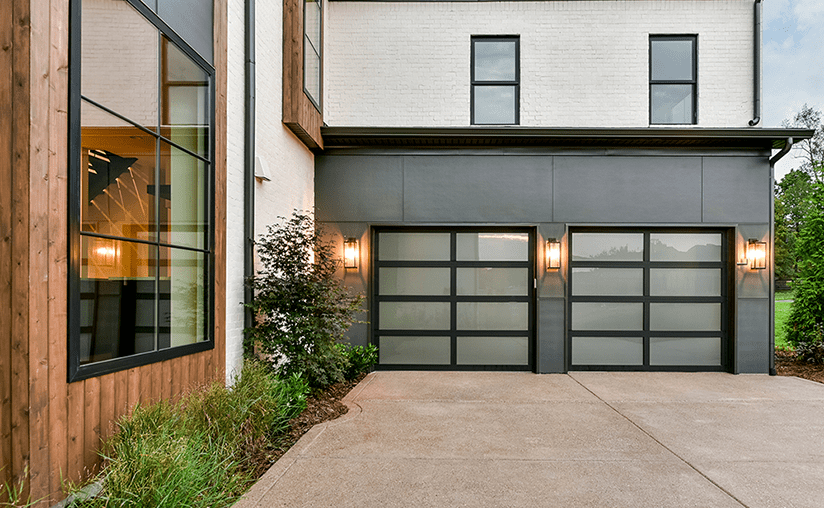Garage Door Materials and Styles

Garage Door
A garage door is a large door that opens and closes the garage. It is generally operated manually or with an electric motor. Large garage doors are usually designed to hold a large automobile. Smaller garage doors can be single-panelled or tilt up and back across the ceiling. Whether you are looking for a new garage door for your home or a repair and replacement, many options are available.
Overview
When buying a new garage door, consider the materials and style. It would be best if you chose something that complements your home’s style. Some materials are more energy efficient than others, and they will save you money. Besides, new garage doors are much more energy-efficient than their predecessors. Here’s an overview of the different materials used for garage doors.
What type of garage door is the cheapest?
There are many things to consider when choosing a new garage door. One of the most important is its style. This can be as simple as a standard panelled door or as complex as a carriage door. A formal panelled entry costs about $700, while a carriage door can cost more than $1,200. Other costs may include adding window frames and decorative hardware. Highly customized doors can easily exceed $1,000, though you can still find inexpensive door handles.
Garage doors are costly, but there are options available that are both durable and affordable. Roll-up garage doors are one option. These doors are relatively cheap, but you may have to spend between $900 and $3,900 for the installation. They are durable and won’t rust or freeze. You can also choose a walk-through garage door for about $400. However, walk-through garage doors are more expensive than roll-up doors.
Steel is the most popular material for garage doors. These doors are strong, but they can also increase your energy bill. Aside from steel, you can also choose an aluminium garage door. Aluminium is lightweight and inexpensive, but it can be more prone to damage than other materials. Another option is vinyl, which is low-maintenance and has a wood-like appearance. However, vinyl doors can be susceptible to extreme temperatures.
Can I install my garage door?
While you might be tempted to try installing your new garage door on your own, it may be more challenging than you thought. Not only is it dangerous, but you can also cause a severe accident if you don’t do it correctly. Moreover, you’re likely to waste valuable time and money if you don’t know what you’re doing. You’re better off hiring a professional.
You’ll need some tools when installing a garage door on your own. You’ll need a level, a socket/ratchet set, and an adjustable wrench. Also, you’ll need to buy an opener and a new opener for your new garage door.
Is it worth it to replace the garage door?
Replacing your garage door may increase the value of your home and make it look more appealing. It can also enhance your home’s security, curb appeal, and energy efficiency. Despite the expense, upgrading your garage door may be worth it. It can add up to 90% to the overall value of your home.
The cost of a new garage door depends on several factors, including the materials and labour required. Installation of a new garage door typically takes a full day. Additionally, it requires a large amount of arm strength and special tools. You may need a professional for more complicated tasks like winding the garage door spring. Hiring a professional can help you avoid potential pitfalls and provide peace of mind.
A garage door can last as long as your home, but heavy use and extreme weather events can shorten its lifespan. If you don’t have previous repair experience, consider replacing your door. If your door is sagging, a single spring is likely worn out. Replacing the springs and rehanging them can restore the balance and ensure the door will wear evenly.
What are the best doors for a garage?
If you have limited driveway space, a traditional up-and-over tilted canopy type of garage door may be your best option. This type of door allows you to leave more headroom when the door is open. It can be installed in a frame or hung to fit the existing opening. They are a good choice for homes with limited space, as they offer a classic panel design that adds beauty to the house. Up-and-over garage doors are more energy-efficient than others and require very little maintenance.
Before buying a garage door, think about how you use it. For example, if you use your garage for workshops, you will want to have plenty of natural light. For this purpose, you can purchase a door that has glass panels. Also, an insulated door will help to keep noise and drafts out.
Garage doors come in a variety of materials. Some are durable and energy-efficient, while others offer a more attractive aesthetic. Some entries are made of wood composite or fibreglass, while others are made from more lightweight materials. Steel doors are generally more robust and last longer, but they can also be more expensive.
What is the life expectancy of a garage door?
When it comes to garage doors can last anywhere from ten to twenty years, depending on the type and materials used. Standard torsion springs should last for around 10,000 cycles, but they will need to be replaced more frequently if used more regularly. If the door is used twice a day, it will last for about 13 years, but if used six times a day, it will need replacement in less than five years. Another factor that affects garage door lifespan is environmental conditions. In areas like Nebraska, for example, the harsh weather can cause your garage door to fail early.
The average lifespan of a garage door is fifteen to thirty years, but it varies between brands and styles. Regular maintenance can extend its life and prevent significant issues from arising. Ideally, a garage door should be serviced by an expert at least once a year.
What wears out in a garage door?
Over time, your garage door will show signs of wear and tear. The entry is exposed to elements like wind, rain, and UV rays, and these elements will cause wear and tear on the parts of the door. The signs of elemental wear will most often be visible on the exterior features of the door, and they can cause warping, cracking, and rusting. These problems can lead to the need for a new garage door.
Fortunately, there are some simple steps that you can take to keep your garage door in good condition. The first step is lubricating all the moving parts several times a year. Make sure to use a lightweight oil, as heavier oils tend to collect dirt and do not work as well during cold winters. Other suitable lubricants include WD-40 and spray graphite.
The next step is to check the springs. The torsion springs in a garage door are responsible for counterbalancing the door’s weight and keeping it in place. These springs are typically rated for about 10,000 cycles. However, impacts and high humidity can accelerate the rate of wear on them. Commercial operations with a high volume of usage will need to replace torsion springs more often than homeowners. A broken spring can cause the door to collapse, which isn’t a good thing.





